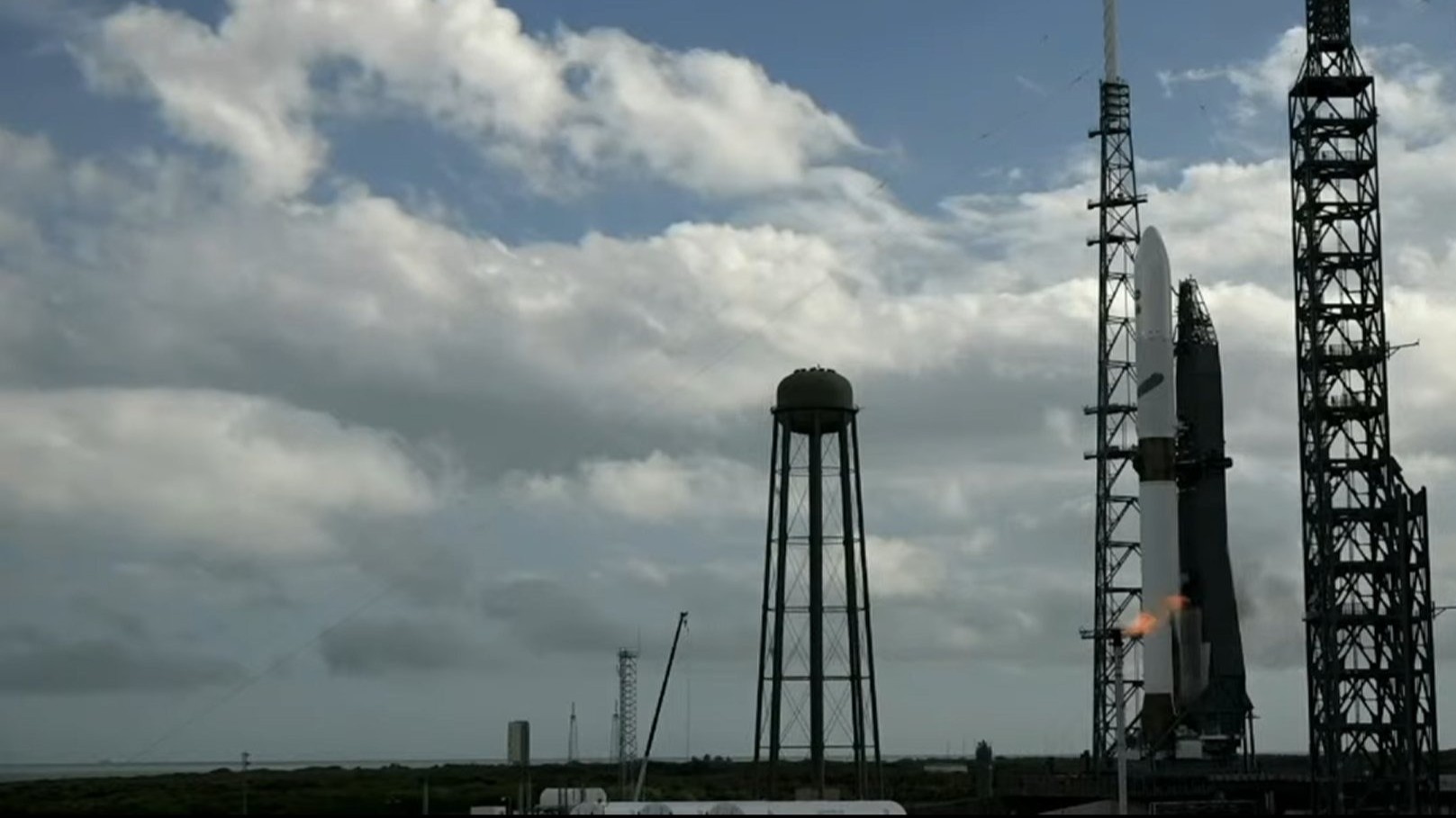Blue Origin launches 6 tourists on suborbital trip from Texas, including 750th person ever to fly into space
The 10-minute suborbital flight lifted off Sunday (June 29) from West Texas.
Blue Origin sent its 70th person into space today (June 29) on its 13th rocket flight to carry passengers.
The company's New Shepard suborbital launch vehicle lifted off Saturday at 9:39 a.m. CDT (10:39 a.m. EDT or 1439 GMT) from its Launch Site One in West Texas. On board were husband and wife Allie and Carl Kuehner, Leland Larson, Freddie Rescigno, Jr., Owolabi Salis and James Sitkin.
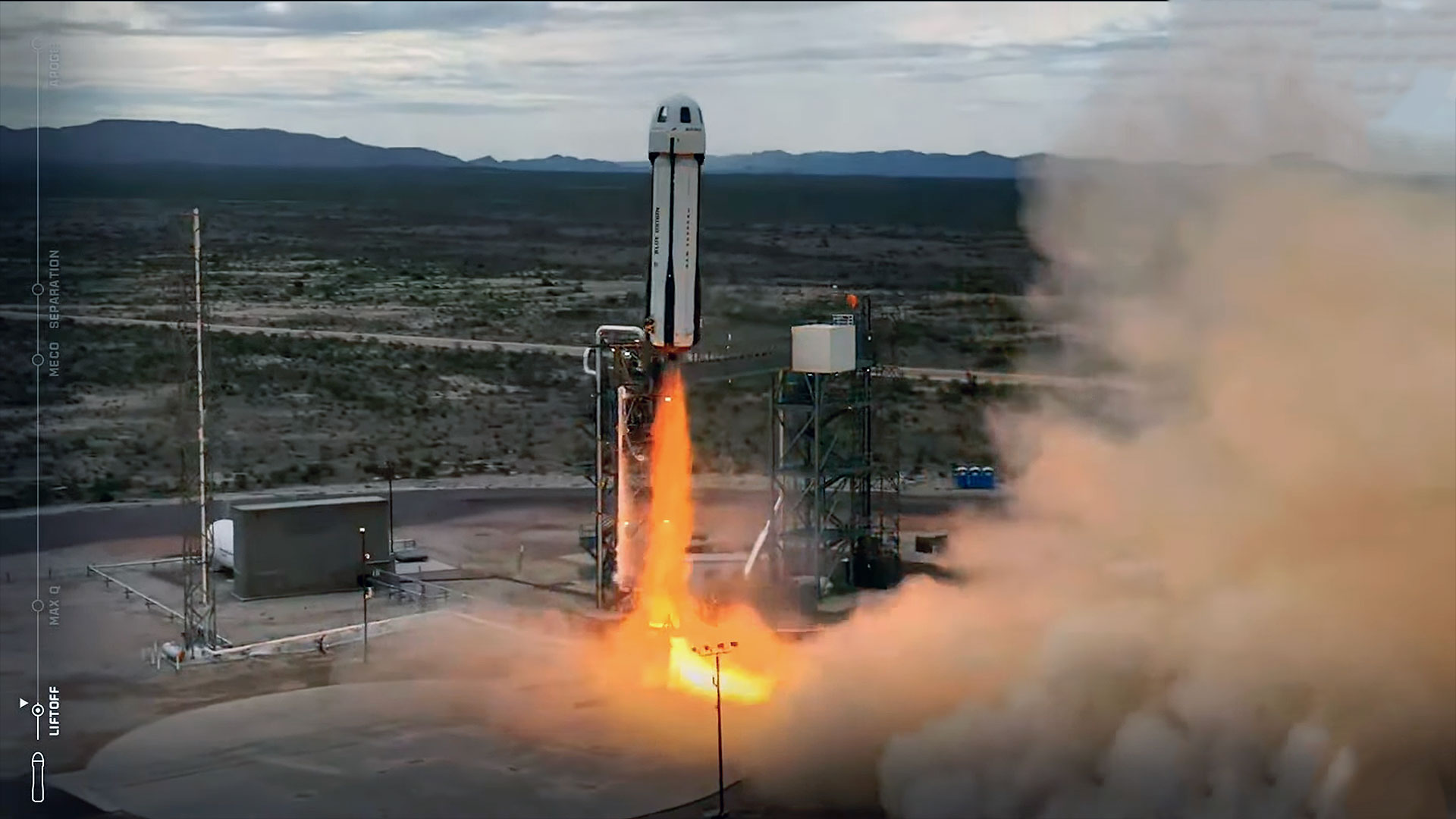
Carl Kuehner became Blue Origin's astronaut number 70, which based on prior precedent, was determined by the seat on board the New Shepard capsule that he assigned for the flight. He also became the 750th person in history to reach space, as recorded by the Association of Space Explorers' Registry of Space Travelers.
The 10-minute NS-33 mission — numbered such as this was Blue Origin's 33rd New Shepard flight overall — went to plan, with both the propulsion module (Tail 5) making a safe vertical landing and the crew capsule, named "RSS Kármán Line," returning the passengers to a parachute-slowed, air thruster-cushioned touchdown not far from where they launched.
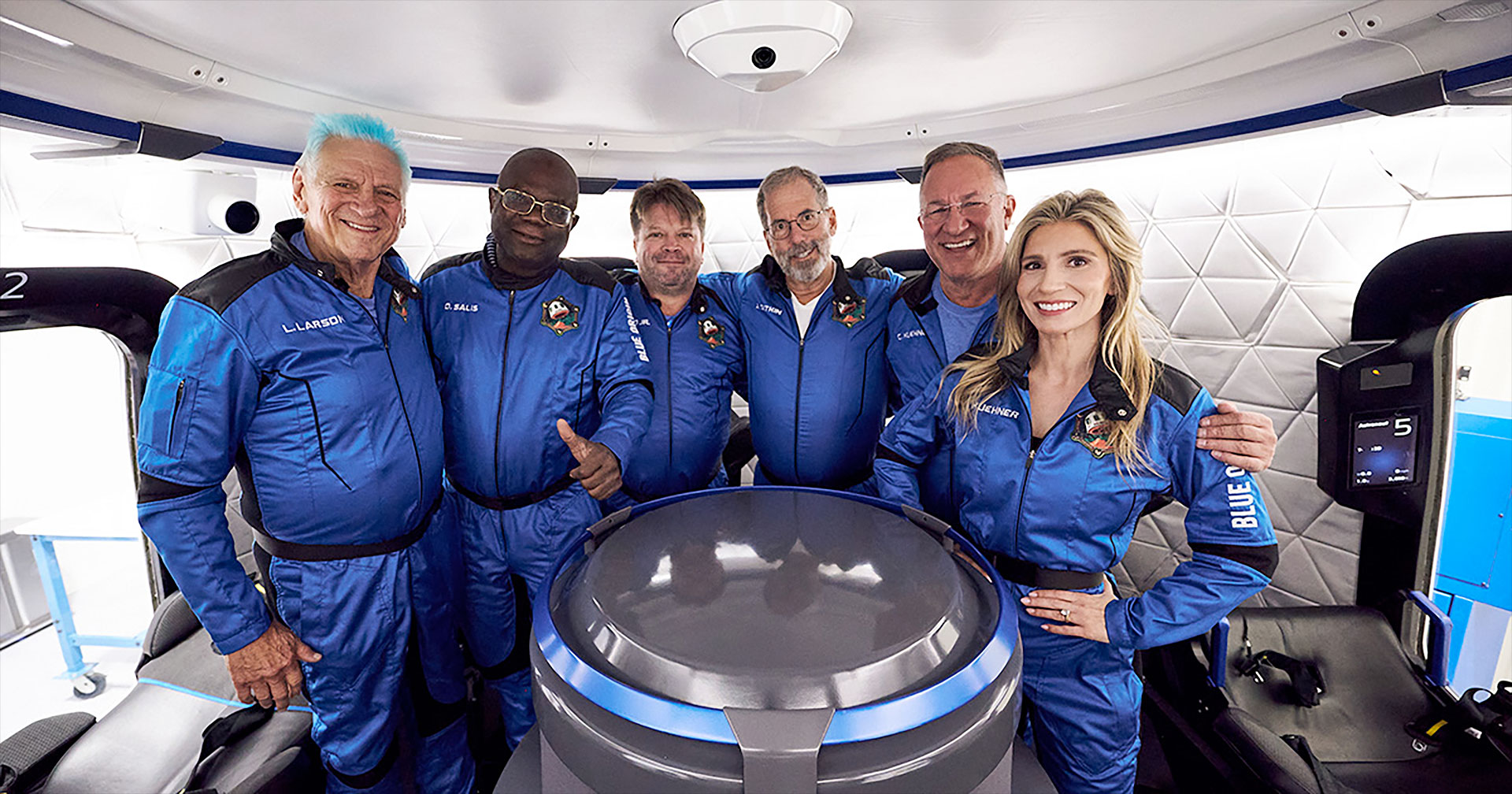
For about three minutes as the gumdrop-shaped capsule reached its apogee, or highest point away from Earth, the Kuehners, Larson, Rescigno, Salis and Sitkin experienced weightlessness and saw the curvature of the planet set against the stark blackness of space.
The flight reached a 345,044 feet (105.2 km) above the ground, surpassing the Kármán Line, the internationally-accepted boundary between Earth and space at 62 miles high (100 kilometers).
Flying along with the crew were more than 1,000 physical and digital postcards designed by students and the public, as collected by The Museum of Flight in Seattle and Parkcrest Elementary in Burnaby, British Columbia, Canada. The cards are part of an on going project by Blue Origin's non-profit organization Club For the Future.
Breaking space news, the latest updates on rocket launches, skywatching events and more!
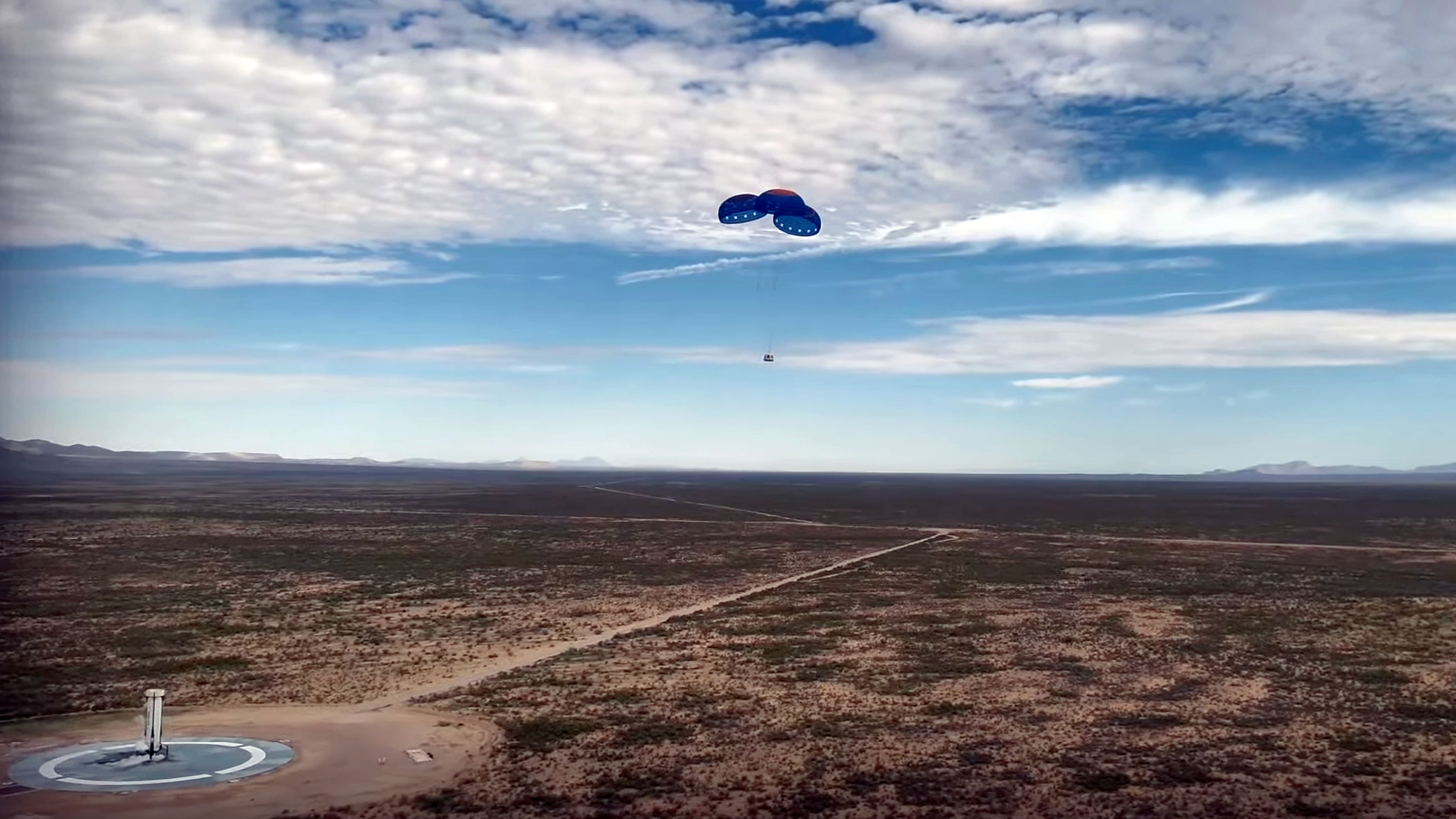
As with all New Shepard fights, the cost per seat on NS-33 was not disclosed. The passengers included an environmentalist, the chairman of a real estate development firm, the former CEO of a public transportation company, an electrical wire and cable distributor, and two attorneys.
The six NS-33 passengers dubbed themselves "The Solstice 33," as they were originally scheduled to launch on the summer solstice (June 21) but were delayed by poor weather conditions. Their flight brought the total number of people who have flown on suborbital flights to 123, according to the Association of Space Explorers.
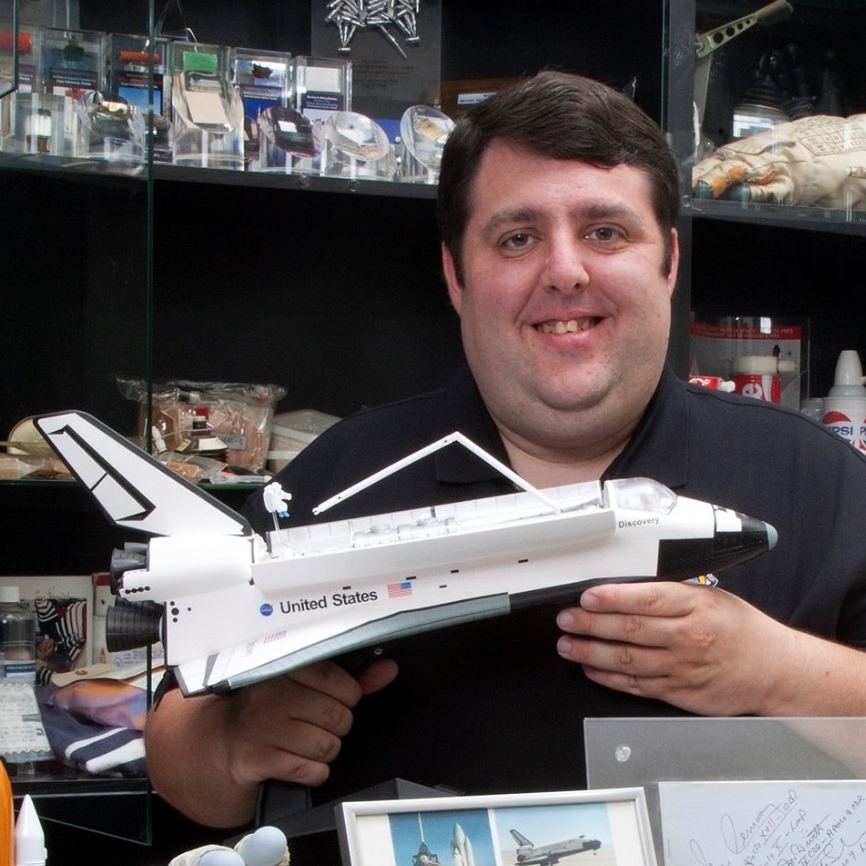
Robert Pearlman is a space historian, journalist and the founder and editor of collectSPACE.com, a daily news publication and community devoted to space history with a particular focus on how and where space exploration intersects with pop culture. Pearlman is also a contributing writer for Space.com and co-author of "Space Stations: The Art, Science, and Reality of Working in Space” published by Smithsonian Books in 2018.
In 2009, he was inducted into the U.S. Space Camp Hall of Fame in Huntsville, Alabama. In 2021, he was honored by the American Astronautical Society with the Ordway Award for Sustained Excellence in Spaceflight History. In 2023, the National Space Club Florida Committee recognized Pearlman with the Kolcum News and Communications Award for excellence in telling the space story along the Space Coast and throughout the world.
You must confirm your public display name before commenting
Please logout and then login again, you will then be prompted to enter your display name.
